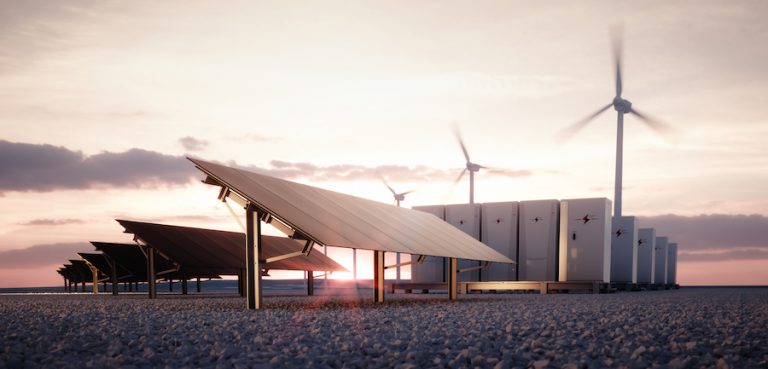
In 2024, renewable energy in the UK crossed a historic threshold, supplying 50.4% of the UK’s electricity. It was the first time renewables have provided more than half of the country’s generation, up from 46.4% in the previous year. The total output reached a record 143.7TWh, surpassing the 135.8TWh set in 2023.
In this article, we’ll dive deeper into the numbers and the industry’s reception. Let’s get started.
Breaking the 50% barrier
The leap to 50.4% marks a significant shift in the UK’s energy mix. For the first time, more than half of all electricity came from renewable sources. Wind, bioenergy, solar and hydro together surpassed the combined contribution of fossil fuels and nuclear. The increase from 2023 was driven by both new capacity and greater generation in key areas.
Headline figures:
- Renewables’ share of total generation – 50.4% (up from 46.4% in 2023)
- Total renewable generation – 143.7TWh (record high)
- Previous record – 135.8TWh (set in 2023)
Wind power remained the single largest contributor to the renewable output, while bioenergy made notable gains. Solar and hydro also played a part, despite challenges including reduced hours of sunlight.
Power mix
Wind power accounted for 58% of renewable electricity in 2024, providing more than a quarter of the UK’s total generation. Overall, wind produced 83.3TWh of electricity, a 1.3% increase on 2023.
Offshore wind retained its position as the largest single renewable technology, generating 48.5TWh. However, this was 2.2% lower than in the previous year. The generation figure was affected by planned maintenance, unplanned outages and curtailment. The DESNZ noted that despite the fall, offshore wind continues to lead in the renewable sector.
Onshore wind grew strongly, with a 6.9% increase, taking its total output to 34.7TWh. This growth helped to offset the reduced offshore performance, keeping wind’s overall contribution at a high level.
Bioenergy delivered the biggest percentage jump of the year, rising 17% overall. Within that figure, biomass generation climbed by 27% to 5.6TWh. DESNZ identified bioenergy’s expansion as the main driver behind renewables reaching a majority share of total generation.
Solar power contributed 5% of the UK’s electricity, generating 14.4TWh. Output fell by 1.9% compared to 2023 because 2024 was the least sunny year since records began in 2021. However, new capacity installations grew by nearly 13%, helping to limit the impact of lower sunlight hours.
Hydro generation increased by 6.1 year-on-year to 5.8TWh,
Let’s recap the power mix in 2024:
- Wind – 83.3 TWh total
- Offshore – 48.5TWh (down 2.2% y-on-y)
- Onshore – 34.7TWh (up 6.9%)
- Bio – up 17% overall
- Biomass up 27% to 5.6TWh
- Solar – 14.4TWh (down 1.9%)
- Capacity up almost 13%
- Hydro – 5.8TWh (up 6.1%)
Across the sector, around 73% of renewable fuels were used for electricity generation, although a third of this was lost during the conversion process.
Fossil fuels in retreat
While renewables were setting records, fossil fuel generation continued its long-term decline. Output from fossil fuels fell 16% in 2024 to 90.5TWh. Gas remained the largest single fuel source, but that dropped by 15% to 86.7 TWh.
Coal generation fell even more sharply, down 46% to just 2TWh, the lowest figure ever recorded in the UK. This drop followed the closure of the Ratcliffe-on-Soar power station in September 2024, the last coal-fired power plant in the country. Its closure marked the end of coal generation in the UK’s electricity system.
Industry reception
By and large, the UK energy industry welcomed these results.
Jane Cooper, deputy chief executive of Renewable UK, called the figures a landmark moment, describing renewables as the ‘backbone’ of the UK’s energy system. She pointed to the benefits for billpayers, with renewables delivering stable prices, and urged that the achievement be matched with reforms to electricity markets and the grid. Such changes, she argued, would ensure households and businesses see the maximum benefits from the clean energy rollout.
Cooper also highlighted the opportunity presented by the clean energy auction soon, which could secure up to £53 billion in private investment for new offshore wind projects alone.
What’s next?
The achievement of a majority share for renewables marks a decisive moment in the UK’s energy transition.
With fossil fuels in retreat and coal virtually gone from the mix, the focus now turns to how the UK can maintain and build on this position. The investment potential in new projects is substantial, and reforms to markets and infrastructure could ensure the benefits of this cleaner power system are fully realised.
The 2024 figures show what is possible when capacity, technology and investment come together. How the next phase unfolds will determine whether this milestone is the foundation for more decarbonisation and permanent energy stability.
